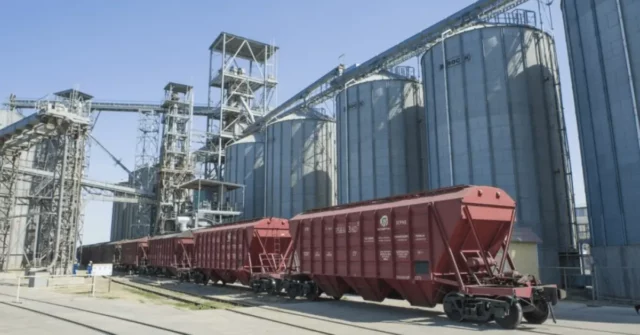Record Grain Transportation: A July Surge
In a remarkable turn of events, the first ten days of July witnessed an impressive movement of grain by rail, with a staggering 535,000 tons transported for export. This information was shared in a notable online meeting between representatives from Ukrainian Railways and key players in the agricultural sector. It highlights an ongoing trend that’s reshaping how grain is transported in Ukraine.
Key Highlights of Grain Transportation
— **Total Grain Transported in July**: 648,600 tons
— **Grain for Export**: 535,000 tons (80% to ports, 20% to other destinations)
— **First Six Months of 2023**: 18,731,000 tons transported for export (a 43.3% increase from last year)
— **Daily Transport Volume**: A steady range of 47,000 to 63,000 tons
Imagine the bustling ports during a peak season, as ships are loaded with grain that will reach markets all over the globe. The 18.7 million tons transported in just six months is a testament to Ukraine’s agricultural power, placing it among the top grain exporters. This increase is not just numbers; it translates into economic growth, more jobs, and improved livelihoods for farmers and exporters alike.
Analyzing the Trends
This surge in grain transportation is not merely a seasonal spike; it reflects a broader trend in agricultural logistics. The significant 43.3% increase compared to last year speaks volumes about the enhancements in rail infrastructure and the efficiency of logistics operations. For instance, with railways handling 80% of grain exports, innovations in scheduling and loading processes have improved turnaround times, allowing more grain to reach the ports faster.
Consider real-life implications: farmers are receiving their payments quicker, which leads to reinvestment in their crops and equipment. Exporters are finding new markets, and consumers globally benefit from a steady supply of grain products. For example, countries in Africa and the Middle East, often reliant on grain imports, can maintain stability in their food supplies, thanks in part to increased transportation efficiency.
Unique Tips for the Agricultural Sector
1. **Leverage Technology**: Investing in tracking software can significantly improve logistical efficiency. It allows for better planning and reduces delays.
2. **Collaboration is Key**: Rail companies and agricultural producers should foster closer ties to streamline operations. Joint planning sessions can identify bottlenecks before they become problems.
3. **Sustainability Matters**: As transportation needs grow, so does the necessity for sustainable practices. Consider options for reducing carbon footprints, such as optimizing load capacities and maintaining rail infrastructure.
4. **Market Awareness**: Keep an eye on global market trends. Understanding demand in different regions can help direct shipments more effectively, maximizing profit margins.
As we look ahead, the consistent daily volume of grain transportation—staying between 47,000 and 63,000 tons—suggests a robust and resilient supply chain. With ongoing advancements and the commitment of stakeholders in the agricultural sector, Ukraine’s position in the global grain market seems not only secure but poised for further growth.
In conclusion, the record-breaking figures for grain transport this July convey a powerful narrative about resilience, innovation, and opportunity within the agricultural landscape. By embracing new strategies and fostering collaboration across the logistics and agricultural sectors, we can ensure sustainable progress that benefits all involved.






